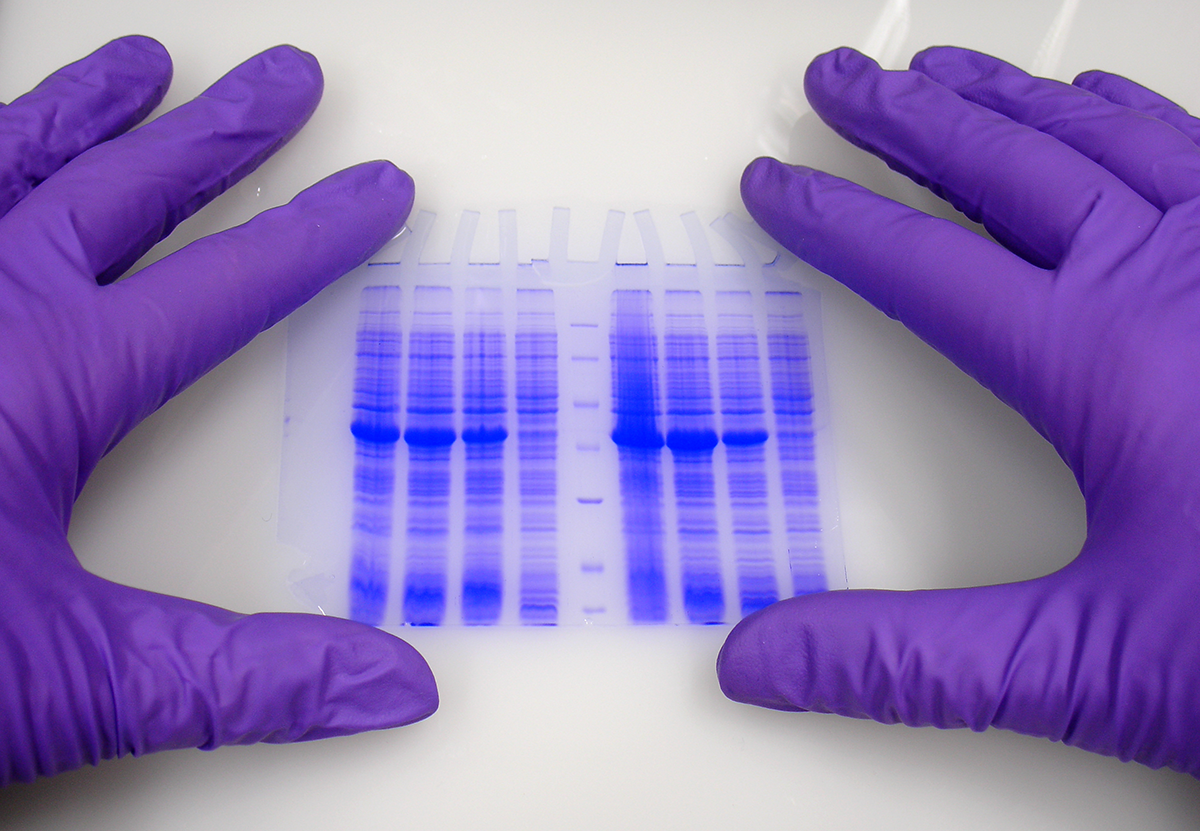Proteins are an essential part of nutrition, medicine, and biochemistry. Modern technology has allowed producing recombinant proteins in large quantities for research and therapeutic use. One of the most common expression systems for protein production is E. coli. However, when heterologous (non-bacterial) proteins are expressed in bacteria, often a produced protein is found in “inclusion bodies,” misfolded or improperly formed protein, as opposed to properly formed, soluble protein. While recovery of a biologically-active protein from inclusion bodies is feasible through refolding, protein expression in a soluble form is still highly desirable. Thus, efforts for optimization of soluble expression in bacteria are an important part of protein production project.
The following methods had been used to improve recombinant protein solubility in E.coli:
- Expression of a protein in a truncated form.
Often large heterologous proteins are difficult to express in E.coli, as they are easily denatured or made insoluble. Thus, the expression of a smaller part of the selected protein can improve solubility. - Reduction of the protein synthesis rate.
The rate can be slowed by lowering the growth temperature or the inducer concentration, as well as through the use of a weaker promoter, DNA which initiates transcription of a protein or gene. - Alteration of the growth environment.
The regulation of pH fluctuations with a buffer and the addition of co-factors, which allow for protein folding/stability, are common methods. Increasing osmotic pressure through the use of polyols and sucrose allows for the accumulation of compatible solutes in the cells, which stabilize protein structures, allows for more soluble protein to be produced as well. - Co-expression of a target protein with molecular chaperones.
Chaperones assist with folding and assembly during protein synthesis. They can significantly improve protein folding within the cells. However, the level of chaperone expression needs to be varied for optimal production. - Protein expression in the periplasm or “inner wall zone.”
This allows for the formation of disulfide bonds, which are necessary for disulfide bond containing protein. However, such expression can result in lower yields, while some expressed protein can still be present in the cytoplasm and cytoplasmic membrane. - Addition of purification tags or fusion proteins to expression
The use of purification tags allow for improved solubility and the promotion of proper protein folding. However, to prevent poor yields or damage to the protein these tags must be removed after expression. “Affinity tags” are the most commonly used, consisting of a small amino acid sequence, but larger “solubility-enhancing” tags are more effective for improving the solubility of proteins that are harder to express. Fusion proteins allow for the combination of peptides, and are often naturally found on the target protein. They can facilitate protein solubility, detection, and purification. Fusion proteins can also be used as a “tag,” to direct protein to a specific part of the cell.
Overall, there are many factors that affect protein solubility. The presence of certain amino acids, the type of bacterial host used for expression, and the growth environment in general can all influence protein soluble expression in E.coli. Depending on the nature of a target protein and its final application requirements, the above listed methods can allow for more soluble protein to be expressed.
ARVYS Proteins offers high-quality protein services in the area of bacterial protein expression including the generation of expression constructs in a specified vector, expression host selection, expression screening for multiple protein variants, and optimization of expression conditions.




